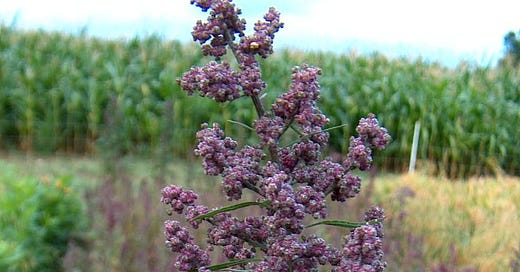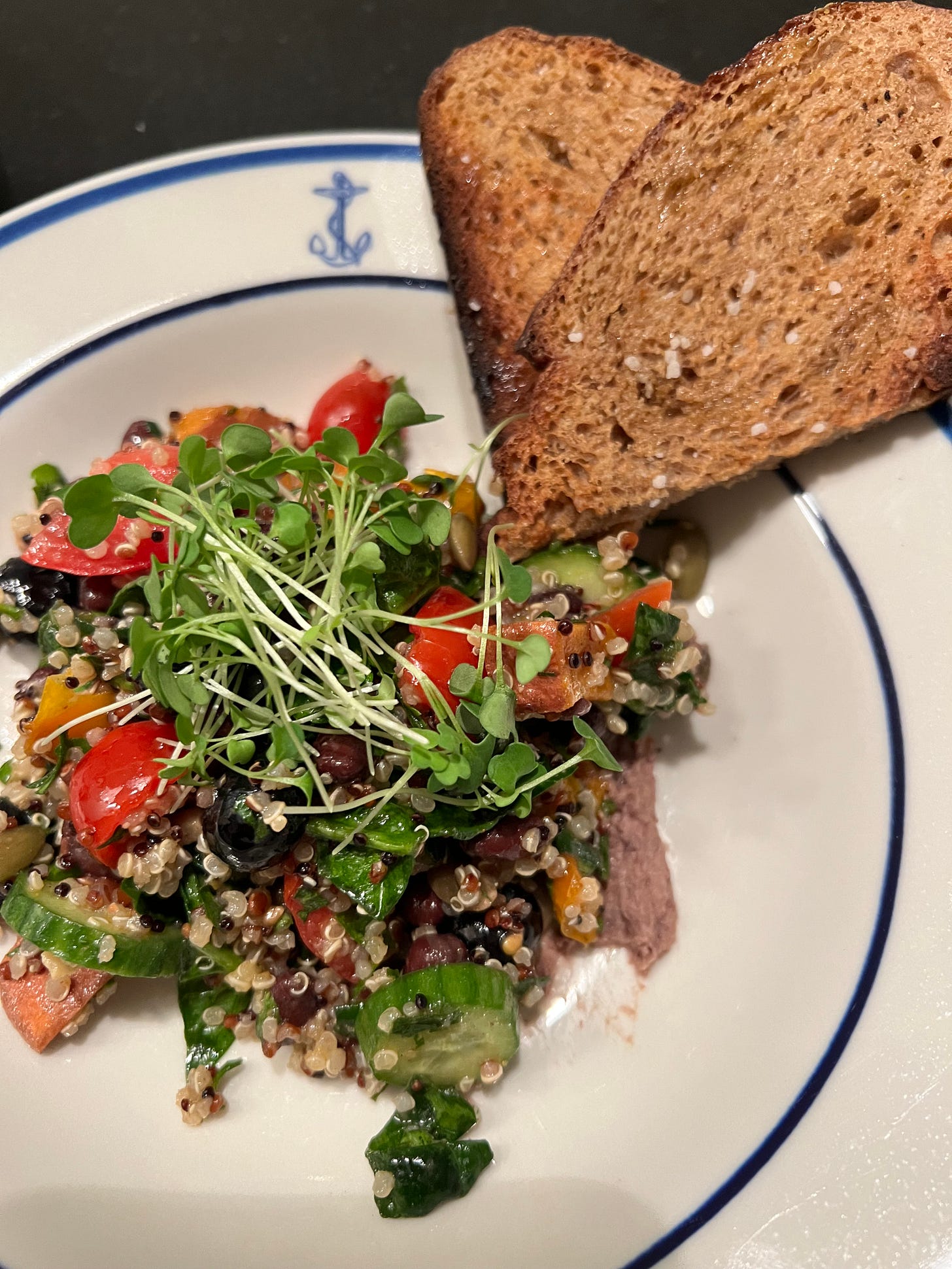Lets revisit this little seed because it packs a punch
and quinoa with veggies, blueberries, and black beans
People usually go either way with quinoa. The first time I really enjoyed it was up in Saratoga, NY with my girlfriends on a long weekend getaway in the early 2000’s. We were at a beautiful inn and enjoying the breakfast. One of the items on the table was quinoa with craisins, scallions, veggies and a lime dressing. It was delicious. I immediately started adding it to my rotation and over the years it goes in and out of how often I have it on the menu but I always have it on hand in my pantry. It has been a few weeks since I made it (crunchy quinoa phase in November and early December). I had plenty of veggies and decided to add blueberries and a dressing with a hint of maple syrup. I used black beans but any bean would be delicious in this. I wish I had had kidney beans. Next time.
Before we embark on the recipe lets take a moment to honor this highly nutritious grain that has been a staple in the diet of people in South America for thousands of years. Its history, cultivation, and rise to popularity in the United States, alongside its nutritional benefits, make it a remarkable food item worth exploring.
Quick history and origin
Quinoa (pronounced KEEN-wah) is not a grain in the traditional sense, but rather a seed from the Chenopodium quinoa plant. It is closely related to spinach, beets, and chard. The Incas revered it as the "mother of all grains" and even used it in their rituals. It was first cultivated in the Andean region of South America, which covers parts of Bolivia, Peru, and Colombia, around 3,000 to 4,000 years ago. The Incas were able to cultivate quinoa in the harsh conditions of the high Andes mountains, showcasing its resilience and adaptability.
Popularity in the United States
Quinoa began to gain cult popularity in the United States in the 1970s and 1980s, largely due to its health benefits and versatility in cooking. Health food enthusiasts first embraced it, and its popularity grew as more people sought gluten-free and high-protein food options. By the early 21st century, quinoa had become a staple in health food stores and supermarkets across the country, celebrated for its nutritional profile and ease of use in a wide array of dishes. I started with red quinoa but quickly found that I like all of the quinoa types. I love to toast it, dry in the pan first, and then add the water. Makes it a little nuttier. I find people in my family and circle of friends usually don’t choose quinoa as their first “go to” but if you take a look below perhaps the stats may give you the push you need to hold on the rice or farro and regularly add this to your weekly meals if you are not already.
Nutritional profile
Quinoa is renowned for its impressive nutritional benefits. It is one of the few plant foods considered a complete protein, containing all nine essential amino acids that our bodies cannot produce on their own. A cooked cup of quinoa (about 185 grams) provides approximately:
8 grams of protein
5 grams of fiber
Significant amounts of magnesium, phosphorus, manganese, and folate
Small amounts of heart-healthy omega-3 fatty acids
Additionally, quinoa is gluten-free, making it a fantastic alternative for people with gluten sensitivities or celiac disease.
For those of you who are interested: one dry cup of quinoa will result in about 3.5 cups of cooked quinoa. Nice amount to feed a crowd.
Other Tiny Seed Grains to Note
Beyond quinoa, there are several other tiny seed grains (or pseudocereals) that offer similar health benefits and are worth incorporating into a diverse, mostly plant-based diet:
Amaranth: Like quinoa, amaranth was a staple of the Aztec diet and is high in protein, fiber, and micronutrients such as magnesium and iron.
Buckwheat: Despite its name, buckwheat is not related to wheat and is gluten-free. It is rich in antioxidants and minerals, including magnesium and copper.
Millet: This versatile grain is a good source of fiber and protein. It can be used in everything from breakfast porridges to salads and stews.
Teff: Originating in Ethiopia, teff is the smallest of all grains but packs a nutritional punch with high levels of calcium, iron, and protein.
I may go more into detail on the above at another time. But I am leaving shortly to go visit two of my closest friends. The first, I was with in Saratoga those many years ago when I had that delicious quinoa dish and the second, since 6th grade we have been cruising. Feeding your heart with friendships is as important as feeding your gut with beans and other diverse foods.
Recommended Recipe
Quinoa with beans and roasted veg your way
This recipe is flexible and I say this so you feel like you can look in your fridge and chop whatever you have from other meals and create this dish. I did this exact thing and found the following:
Ingredients
~ 1/2 cup sweet potato
1 cup cherry or pear tomatoes, cut in half
2 mini cukes
1 cup spinach, when it gets incorporated it reduces quite a bit
cilantro-grabbed a good handful and chopped it up
roasted orange pepper ~ 1/3 cup
1/2 cup blueberries
1/4 cup pepitos
1 1/2 cups of beans or 1 15 oz can rinsed beans of your choice
1-2 cups of quinoa
Add everything into a big bowl
For the dressing
1/4 cup of apple cider vinegar
1 tsp dijon mustard
1 tsp maple syrup
1/2 tsp salt
10 turns of the pepper grinder
1/4 cup EVOO
Whisk everything but the olive oil together. Slowly pour the olive oil and whisk at the same time until it is emulsified. Put to the side until needed.
My ratio is 3 cups of veggies/fruit/beans/seeds to 1 cup of quinoa. For this salad it may have been almost 4 cups of veg to grain so I added a bit more quinoa. I flip the traditional recipe around. Think of pasta with veggies when you order at a restaurant. It usually is mostly pasta with some veggies sautéed in. I prefer the veggies and add some pasta; I do that with all of my bean, veggie, grain recipes and it works for my palate.

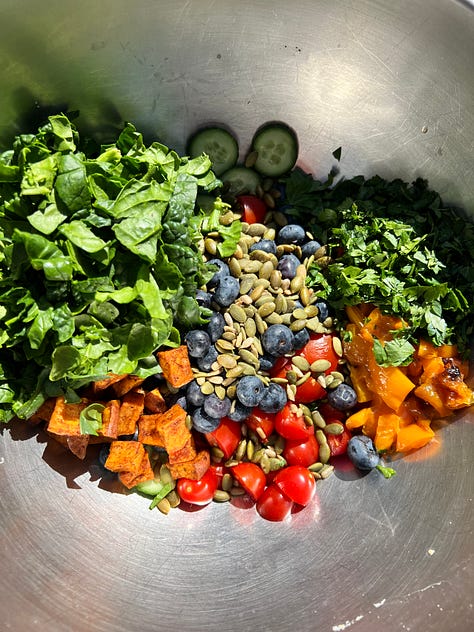

Next, I added in the dressing. Stirring it all in so the veggies are marinating in the liquid. With over 4 cups of goodies in the bowl I added about 1.5 cups of cooked quinoa. I make 1 cup of dried quinoa and use the remaining cooked quinoa to make crunchy quinoa at another time.

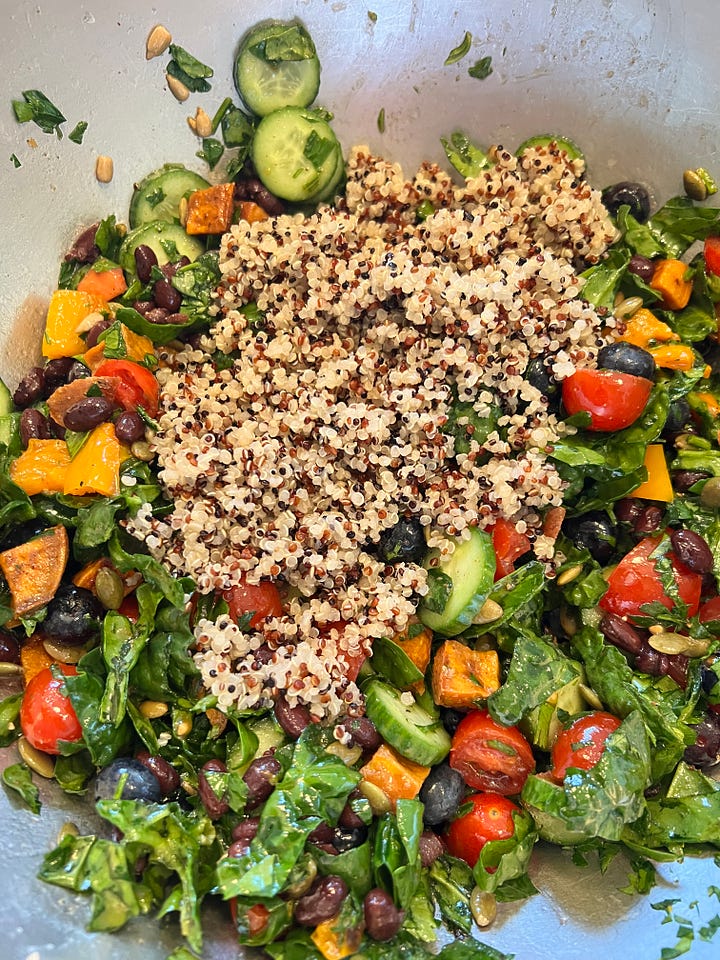
To serve you can plate over a smear of hummus or other dip you like to drag your salad through. With micro greens on top.
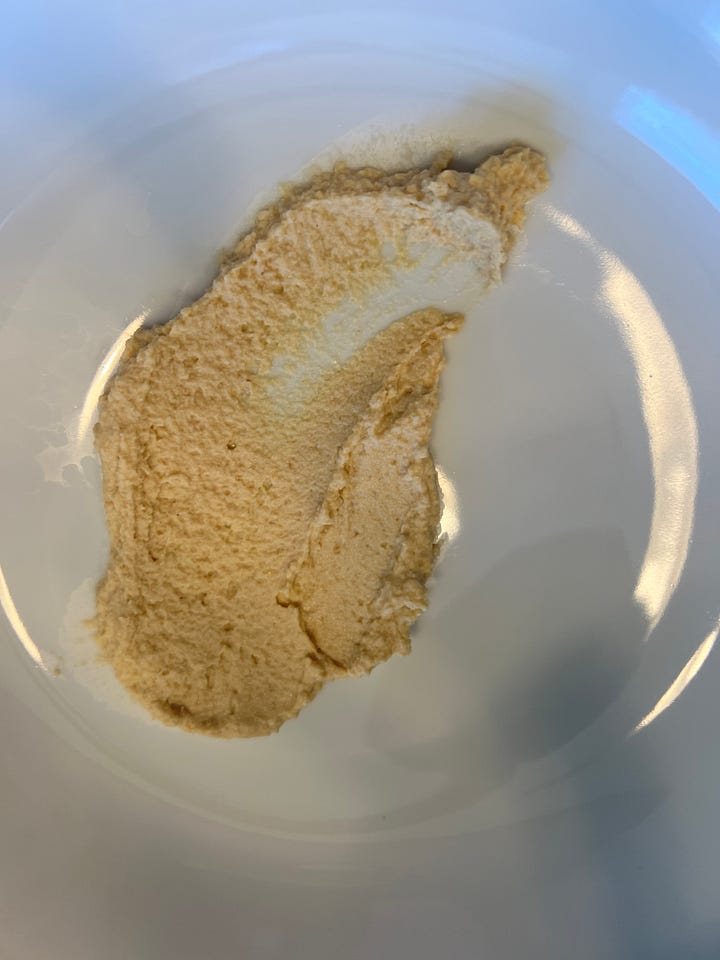
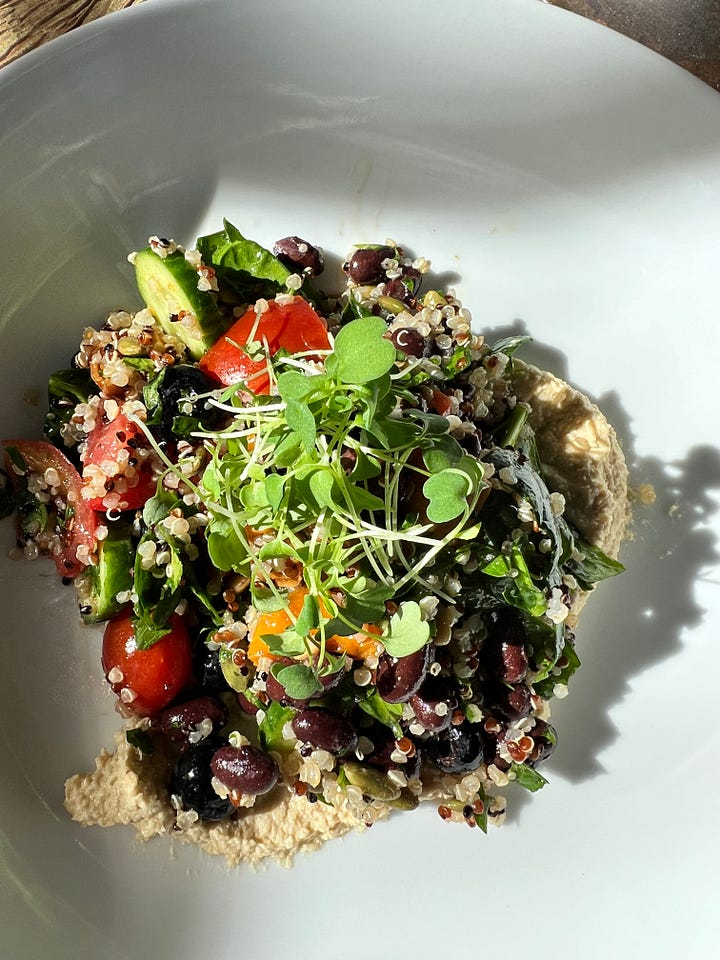
I also served it again with some toasted sourdough.
Enjoy!
Contact
Top photo of quinoa plant by Marcus Hagenlocher.
If you have any questions on integrating beans consistently for gut health now and into the near future, please email me at Denisemancieri1@gmail.com. Feel free to comment below if there are topics you would like to see.
Please share this newsletter with others if you find it may assist them in adding beans to their diet. Or click the heart, below left, so I know you were here. Thank you!
Note: I am not a doctor. I am a teacher and an educator with an earned doctorate in educational leadership. I enjoy research and I can distill large amounts of information into easily understood and digestible pieces allowing people to understand what is happening to their body and possible steps to reverse it with food as medicine. I have healed my own GI issues through choices with food. I followed Karen Hurd’s bean protocol diet, I meditated and still do and I healed. I feel compelled to be in service and educate others as the more people eating beans, alongside a healthy diet and sharing their stories the more people will live a healthier existence. Joy, peace and freedom abound. Please see your doctor and discuss nutritional options before you change any course of action with your health.

